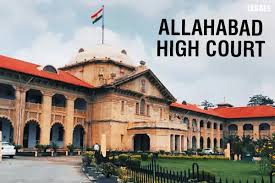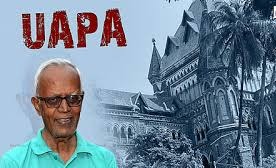C.C. Ghose, J.@mdashThis appeal must be dismissed and for the following reasons. The appeal arises out of a suit for enforcement of a mortgage. The original mortgagor was one Ramdayal Majumdar. The mortgagees were two in number and they were Ajodhyanath and Pareshnath Biswas. It is said that the mortgage moneys were advanced on behalf of three brothers viz., Ajodhyanath, Paresh Nath and Gopinath Biswas. There is no finding either in the judgment of the first Court or in the judgment of the lower appellate Court that Gopinath was interested in the mortgage or in the moneys which were advanced on mortgage. Now, Ajodhyanath died leaving a widow and without issue, Gopinath died leaving a widow and without issue and Paresh Nath died leaving a widow and four sons. The plaintiff purchased the mortgage-bond from the widows of Ajodhyanath and Paresh Nath and from Hemangini, the widow of Gopi Nath. Defendants 1 to 3 are the sons of Ram Dayal, the original mortgagor who is now dead. Defendant 4 is the purchaser of the equity of redemption. Defendants 5, 6, 7 and 8 who were not originally on the record are the sons of Paresh Nath and they were subsequently added as parties defendants to this suit. The date of payment under the mortgage is 13th April 1913. Therefore, if a suit to enforce the mortgage in question had to be instituted it was to be instituted within twelve years from that date under Article 132, Lim. Act. The suit was instituted in April 1925. The first Court decreed the suit, the lower appellate Court has dismissed the suit on, among others, the ground of limitation. One of the points taken in the lower appellate Court was that the attestation of the execution of the document by the mortgagor has not been proved and that being so, the plaintiff was not entitled to enforce the mortgage. The ground urged is this, that the only witness who proved the attestation of the execution of the document was one who had been examined on commission and there were indications apparent on the record to the effect that at the time when the suit came on to be heard in Court, the witness was not ill and, therefore, was not entitled to claim that he should be examined on commission or that his examination on commission should be received in evidence. On this point the first Court did not say anything for the reason, as we are informed, that no objection to the admissibility in evidence of the deposition of the witness concerned was taken. The lower appellate Court has gone into the matter and, as indicated above, has held that the deposition of the witness could not be received in evidence. In my opinion, the lower appellate Court is wrong in the conclusion to which it came on the point in question.
2. To start with, no objection was taken in the trial Court and besides if such an objection had been taken, I have no doubt the trial Court would have taken measures to see that the defect, if any, was cured or that the witness in question was summoned to give evidence on the point referred to above There is no substance whatsoever in the point taken by the lower appellate Court and we must, accordingly, negative the point and uphold the contention urged before us by the appellant. The lower appellate Court has, however, gone into the question of limitation and has held that the suit is barred by limitation. The facts bearing on the question of limitation are these : It appears that on the date the suit was instituted by the plaintiff, he had not got an assignment of the interest of the sons of Pareshnath in the mortgage moneys. The position, therefore, was (and it may be stated in passing that there is nothing on the record to show that Gopinath was interested in the mortgage moneys) that on the date of the institution of the suit, the plaintiff Was the assignee of the interest of one of the mortgagees. It is true that on a date subsequent to the institution of the suit, the plaintiff was successful in obtaining a consequence of the interest of two of the sons of Pareshnath and he obtained release from the other two sons of Pareshnath (defendants 5 and 6) and it is also true that on a date subsequent to the institution of the suit, these four sons of Pareshnath had been made parties to the suit. But in law the position on the date of the institution of the suit was this. The plaintiff had instituted a suit as assignee of one of the mortgagees and he had not taken any steps whatsoever within the time limited for the institution of suits on mortgages to bring on the record the representative of the deceased mortgagee Pareshnath ; in other words, in law his suit on the date of the institution thereof was an incompetent suit. It is unnecessary to refer to cases or even to the sections. The suit on the date of the institution being an incompetent suit, the question is whether the addition of defendants 5 to 8 on a date subsequent to the institution of the suit had the effect of curing the defect in question. In my opinion, it had no such effect. The distinction really is between proper and necessary parties. If a necessary party is left out and is not impleaded till limitatation had run out, the suit must be considered to be one which is barred by limitation : see in this connexion the case of Debi Prosad Sathi v. Dharmajit Narayan Singh [1914] 41 Cal. 727 where the identical question arose.
3. In my view, therefore, the addition of defendants 5 to 8 on a date subsequent to the expiry of limitation as parties defendants to the suit had not the effect of making the plaintiff''s suit which was an incompetent one on the institution thereof a competent one on the date when the parties in question were added. That being so, there cannot be any doubt whatsoever that the plaintiff''s suit was barred by limitation and this appeal must, therefore, stand dismissed with costs.
Panckridge, J.
4. I agree.

